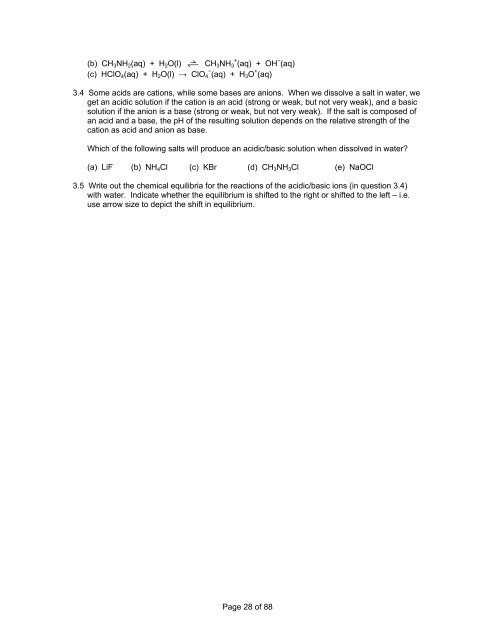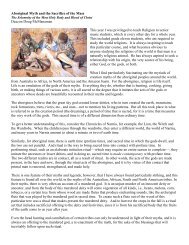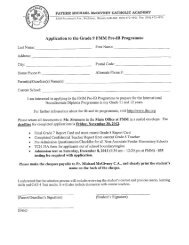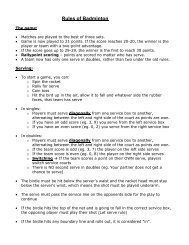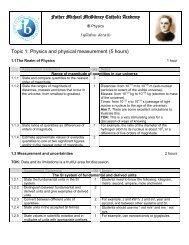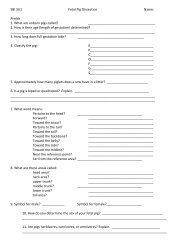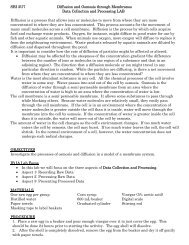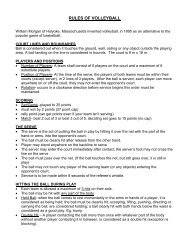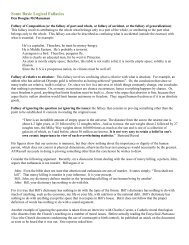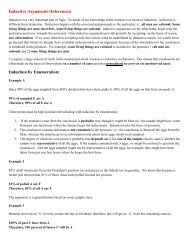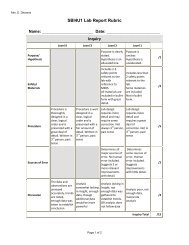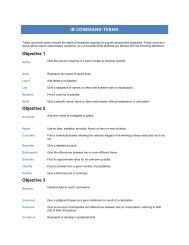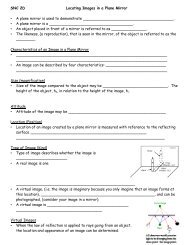Chemistry Review Manual 2
Chemistry Review Manual 2
Chemistry Review Manual 2
You also want an ePaper? Increase the reach of your titles
YUMPU automatically turns print PDFs into web optimized ePapers that Google loves.
(b) CH 3 NH 2 (aq) + H 2 O(l) CH 3 NH 3 + (aq) + OH − (aq)<br />
(c) HClO 4 (aq) + H 2 O(l) → ClO 4 − (aq) + H 3 O + (aq)<br />
3.4 Some acids are cations, while some bases are anions. When we dissolve a salt in water, we<br />
get an acidic solution if the cation is an acid (strong or weak, but not very weak), and a basic<br />
solution if the anion is a base (strong or weak, but not very weak). If the salt is composed of<br />
an acid and a base, the pH of the resulting solution depends on the relative strength of the<br />
cation as acid and anion as base.<br />
Which of the following salts will produce an acidic/basic solution when dissolved in water?<br />
(a) LiF (b) NH 4 Cl (c) KBr (d) CH 3 NH 3 Cl (e) NaOCl<br />
3.5 Write out the chemical equilibria for the reactions of the acidic/basic ions (in question 3.4)<br />
with water. Indicate whether the equilibrium is shifted to the right or shifted to the left – i.e.<br />
use arrow size to depict the shift in equilibrium.<br />
Page 28 of 88


